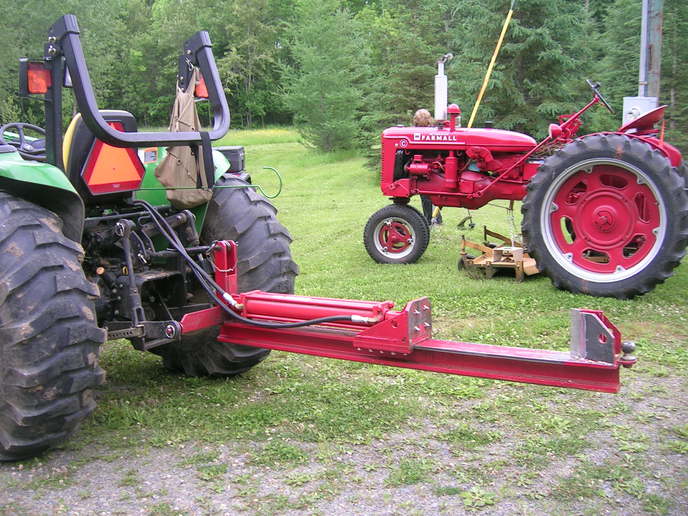There are standards for the pin diameters, but there seem to be no real standards for the distances between the top and bottom pins.
I've learned, this distance plays a serious part in what happens to the implement when you raise and lower it.
If the implement hitch vertical distance is shorter than the tractor link vertical distance, the implement tends to rake forward when lowered, i.e. leans in the forward direction.
If the implement hitch vertical distance is taller than the tractor link vertical distance, the implement tends to rake backward when lowered.
You could fool around with the top link, or get a hydraulically operated one, but it becomes a pain to adjust this top link when loaded, or when switching between implements.
This shows up strongly when using Cat 1 stuff on a Cat 2 tractor...the implement pitches differently out of vertical when raised or lowered.
Is this something that others have dealt with? How?
I build and modify implements for all sorts of tractors and it's a design challenge to get it right..almost purely custom work.
I've learned, this distance plays a serious part in what happens to the implement when you raise and lower it.
If the implement hitch vertical distance is shorter than the tractor link vertical distance, the implement tends to rake forward when lowered, i.e. leans in the forward direction.
If the implement hitch vertical distance is taller than the tractor link vertical distance, the implement tends to rake backward when lowered.
You could fool around with the top link, or get a hydraulically operated one, but it becomes a pain to adjust this top link when loaded, or when switching between implements.
This shows up strongly when using Cat 1 stuff on a Cat 2 tractor...the implement pitches differently out of vertical when raised or lowered.
Is this something that others have dealt with? How?
I build and modify implements for all sorts of tractors and it's a design challenge to get it right..almost purely custom work.


